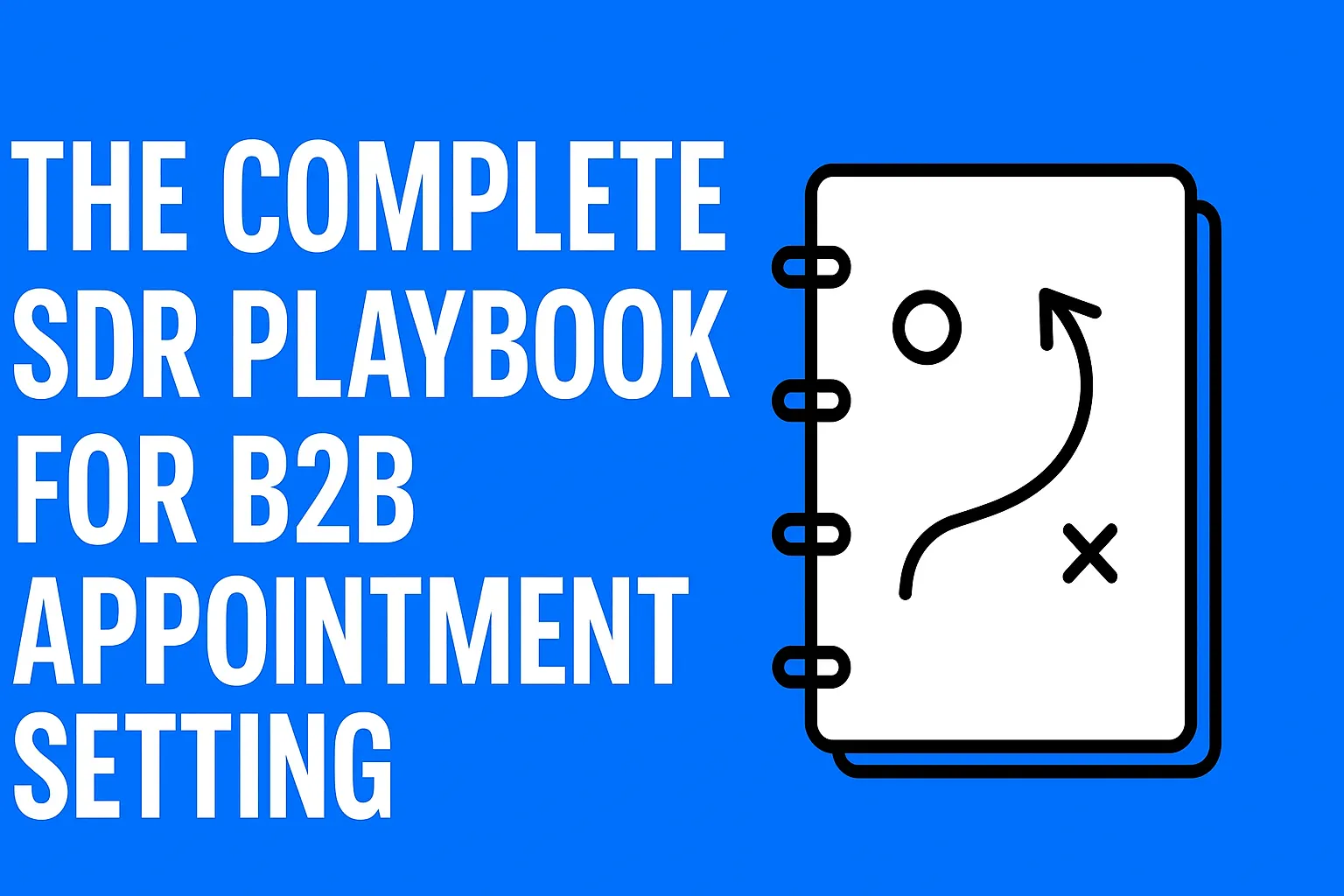There’s a reason great SDRs seem to book meetings effortlessly while others struggle through endless calls and emails.
It’s not just about talent.
It’s about process — having a system that takes the guesswork out of connecting with real buyers.
That’s where a solid appointment setting playbook makes all the difference.
If you’re building, training, or scaling an SDR team for B2B appointment setting in 2025, here’s the honest playbook you’ll want to have in your corner — without the fluff.
First Things First: What an SDR Actually Does in Appointment Setting
It’s easy to assume SDRs are just “people who make calls.”
In reality, a top-performing SDR is part researcher, part relationship builder, part qualifier.
Their real job isn’t just to “book a call” — it’s to find the right prospects, start meaningful conversations, and hand over opportunities that actually have a shot at closing.
If your SDRs don’t know who they’re calling — or why — even the best scripts won’t save you.
Step 1: Know Who You’re Targeting (Really Know)
Before picking up the phone or sending a cold email, the best SDRs already know a few key things:
- What kind of company fits the ideal customer profile (ICP)?
- What specific roles or titles are the right fit?
- What pain points are most likely hitting those people today?
Bad targeting kills appointment setting faster than a bad script ever will.
A good SDR spends real time understanding the buyer before ever saying hello.
Step 2: Build a Contact Strategy That Actually Fits
There’s no “one-size-fits-all” cadence anymore.
Some prospects respond to email. Some to LinkedIn. Some still to phone calls.
Good appointment setting means mixing:
- Personalized cold emails (not templates — real personalization)
- Polite, well-timed cold calls
- Social touches (likes, comments, direct messages)
And it’s not about blasting the same message everywhere.
It’s about creating different touchpoints that feel natural over time.
Step 3: Nail the First 15 Seconds
Whether it’s a cold call or a cold email, the first 15 seconds are everything.
That’s the window to prove:
- You know who they are.
- You’re not wasting their time.
- You have something that might actually help them.
Most SDRs lose meetings because they talk about themselves too soon.
A better approach:
“I noticed your team is expanding into healthcare SaaS — curious if scaling outbound is a current priority?”
Focus on them, not on your product.
Step 4: Ask Smart Questions Early
Appointment setting isn’t about selling.
It’s about qualifying quietly.
Instead of diving into a pitch, great SDRs steer conversations by asking simple, smart questions like:
- “Is this something you’re actively exploring right now?”
- “What’s your top priority for [problem area] this quarter?”
- “Who else would need to weigh in if this made sense?”
It’s not an interrogation — it’s a conversation.
Step 5: Handle Objections Without Getting Defensive
If you’re booking real decision-makers, objections are normal.
They’re not a rejection — they’re a sign someone’s thinking critically.
When an SDR hears:
- “We’re not looking right now.”
- “Send me information.”
- “We have a vendor already.”
— the worst thing they can do is argue.
The right play is curiosity:
“Totally understand — out of curiosity, is [current solution] something you’re planning to expand or change this year?”
Turn objections into opportunities to learn more.
Step 6: Make Scheduling Easy
The end goal is simple: book the meeting.
But “Would you have time next week?” is too vague.
Good SDRs offer two simple time options (“Tuesday morning or Thursday afternoon?”) and send the calendar invite immediately once confirmed.
The easier you make it for prospects to say yes, the more yeses you’ll get.
What a Full B2B SDR Appointment Setting Cadence Might Look Like
Here’s what a real outbound flow might feel like — simplified:
| Day | Channel | Action |
| 1 | Email 1 | Personalized cold email |
| 2 | Connection request with quick intro | |
| 4 | Phone | First call attempt (short voicemail if no answer) |
| 6 | Email 2 | New value angle (case study, insight) |
| 8 | Phone | Second call, reference previous touches |
| 10 | Comment on a post / Soft DM | |
| 12 | Email 3 | Breakup email — polite “Should I close the file?” |
No spamming. No pressure. Just consistent, respectful outreach.
Final Thoughts: Appointment Setting Isn’t About Scripts. It’s About Systems.
When appointment setting feels random, results are random.
When you have a real system, you can coach it, scale it, and improve it.
The best SDR teams aren’t just “hustling” harder — they’re playing smarter.
They know their ICP.
They respect the buyer’s time.
They build relationships before trying to sell anything.
That’s what fills calendars — and pipelines — in 2025 and beyond.
